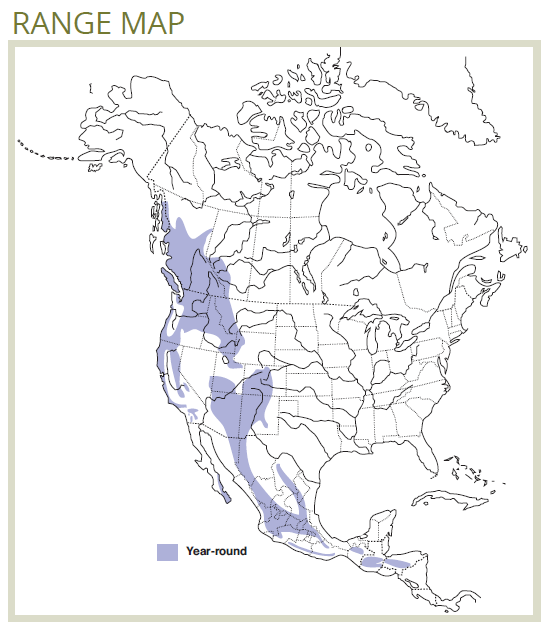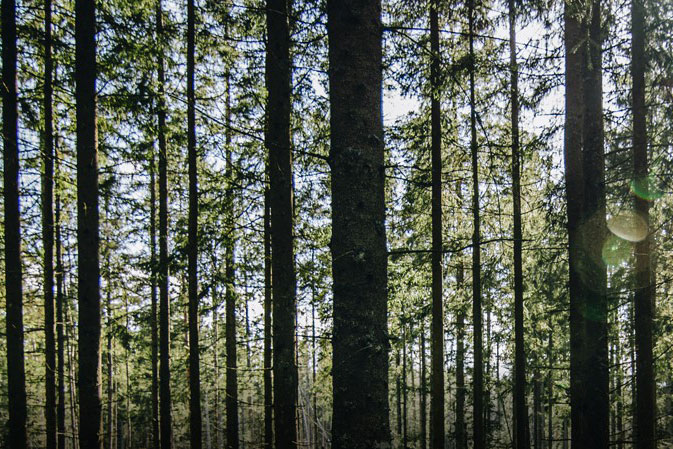The Northern Pygmy-Owl is, as its name suggests, one of the smallest owls in North America. It is secretive and hard to detect during the breeding season, making it a hard species to study.
Northern Pygmy-Owl
(Glaucidium gnoma)
Habitat Ecology
- The Northern Pygmy-Owl occupies a wide range of habitats, including sprucefir, cottonwood bottomlands, aspen/poplar, mixed pine, deciduous-coniferous mixedwood, Douglas fir, western hemlock, and western larch.1,2
- Important habitat features for this species include large trees containing cavities. They are mainly known to nest in cavities excavated by Blackbacked Woodpeckers, Hairy Woodpeckers, Northern Flickers, and Pileated Woodpeckers.2
- Nests are typically observed within old forest but near openings including waterbodies and clearings.2
- This species is associated with older forests (e.g., >80 years in the Alberta Foothills) and high crown closure, tree height, slope, and terrain variability.3

Response to Forest Management
- Few studies have looked at Northern Pygmy-Owl responses to forest management, but it is expected to be sensitive to even-aged management and clear-cutting (removal of existing and potential cavity trees).1,2
- Retention harvesting may benefit this species by retaining nest trees and creating openings for hunting. However, there have been few studies to confirm this and study results have been mixed.3,4
Stand-level Recommendations
- Unharvested forest patches on steep, inoperable slopes may improve foraging habitat value, particularly in conifer-leading forests.3
- Managers should include large-diameter live deciduous trees in patches where available, as these will provide suitable hunting perches and future nest cavities while increasing structural diversity.3 Where deciduous cover is sparse, dispersed retention of trees, snags and stubs may be beneficial,5 however research to determine minimum and optimal retention level and pattern is needed.
Landscape-level Recommendations
- Large, old forest areas with high canopy closure, structural complexity, layering, and natural gaps and openings are considered the most valuable habitat for Northern Pygmy-Owls on the landscape. NRV approaches that maintain these upland habitats are important.
- While retention harvesting may provide foraging habitats, representation of older forest types on the landscape is considered the most valuable action unless further studies provide clear evidence of use and breeding success in harvested areas.3,4
References
- Holt, D. W. & Petersen, J. L. 2000. Northern Pygmy-Owl (Glaucidium gnoma), version 2.0. in The Birds of North America (Rodewald, P. G., ed.) Cornell Lab of Ornithology, Ithaca, New York, USA. Available online: https://doi.org/10.2173/bna.494
- Hannah, K. C. 1999. Status of the Northern Pygmy Owl (Glaucidium gnoma californicum) in Alberta. Alberta Environmental Protection, Fisheries and Wildlife Management Division, and Alberta Conservation Association, Wildlife Status Report No. 20, Edmonton, AB. 20 pp.
- Piorecky, M. D. & Prescott, D. R. C. 2006. Multiple spatial scale logistic and autologistic habitat selection models for northern pygmy owls, along the eastern slopes of Alberta’s Rocky Mountains. Biological Conservation 129: 360–371. Available online: https://doi.org/10.1016/j.biocon.2005.11.003
- Giese, A. R. & Forsman, E. D. 2003. Breeding season habitat use and ecology of male northern pygmy-owls. The Journal of Raptor Research 37: 117–124. Available online: https://sora.unm.edu/sites/default/files/journals/jrr/v037n02/p00117-p00…
- Bonar, R. 2018. Personal communication. April 6, 2018








